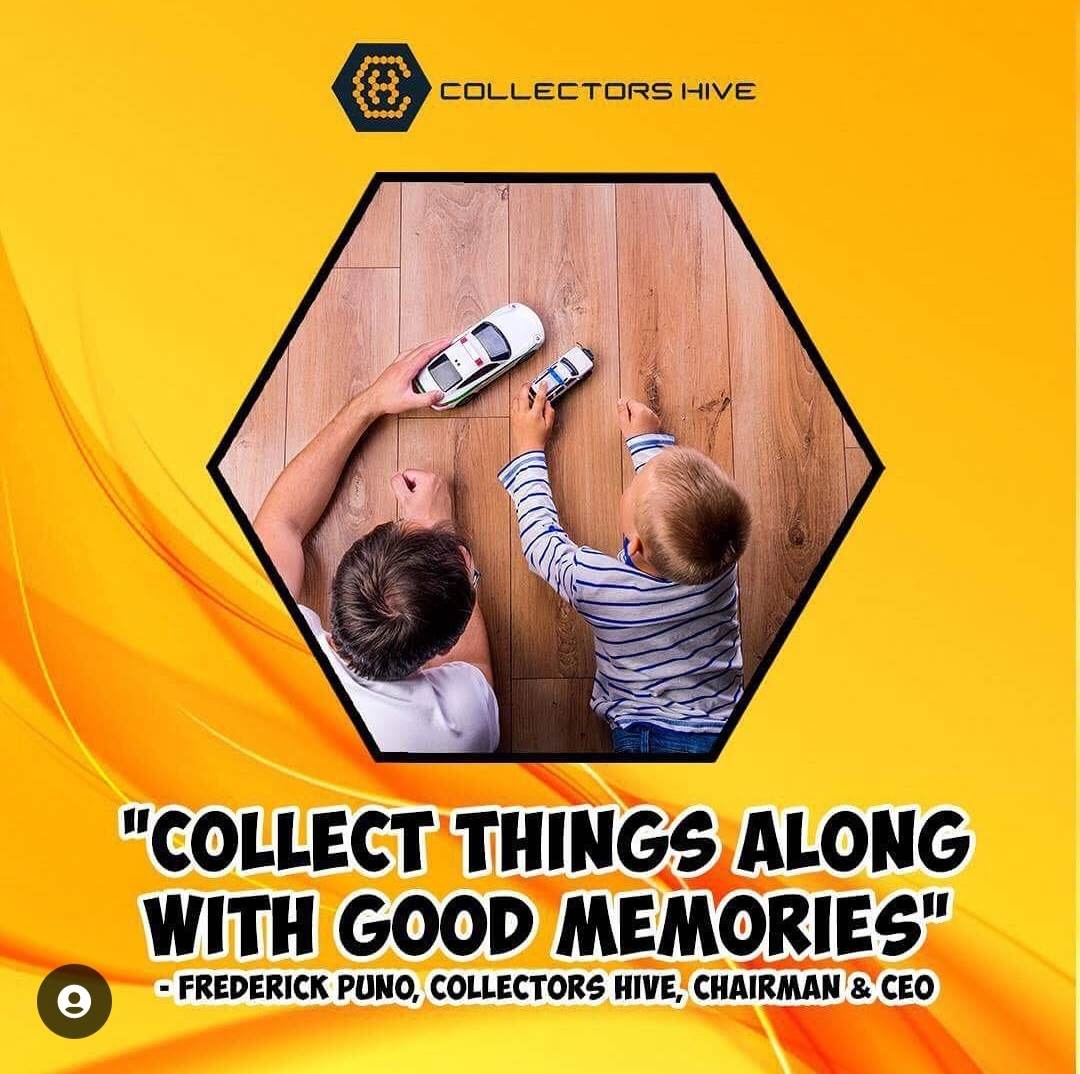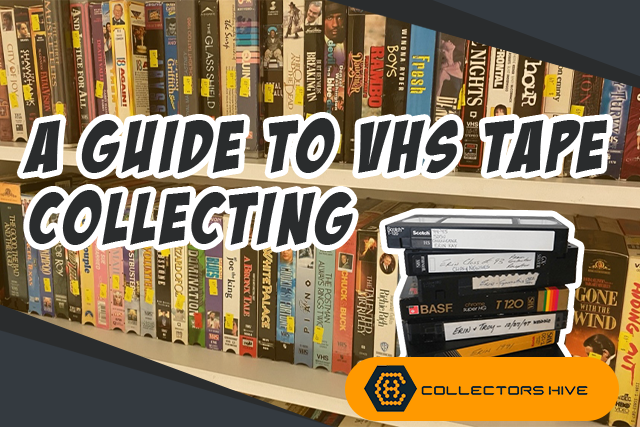VHS Collectors: A Guide for VHS Tape Collecting
In recent years, there has been a renewed interest in the VHS format. However, many people may find it difficult to comprehend why, given the present era of ultra-high resolution 4k and the ease of streaming. For those who grew up in the 1980s and 1990s, VHS tapes were the primary way to watch movies and television series at home, in addition to over-the-air programming, basic cable, and premium service options like HBO. VHS, like all tangible media, has a distinct, tactile charm and nostalgia that is severely lacking in today’s rapid shift toward digital purchases and services. As an adult who grew up in the 1980s and 1990s and collects all types of physical media, I am fascinated by the resurgence of VHS collecting and how this format is becoming important again. This page tries to provide a summary of VHS collecting’s expanding popularity, as well as some useful insights and resources for both long-time and new collectors.

When I first started collecting VHS tapes in 2019, I went to local Goodwill and other thrift stores for a variety of reasons. Whether it was seeing a tape for the first time in nearly three decades that I used to rent from a local grocery store or discovering some gorgeous, illustrated box art that has all but disappeared, my interest was and continues to be piqued. Furthermore, having watched an uncountable number of films from the 80s and 90s when rentals were two for one dollar at that local grocery shop, I have a strong appreciation for the library of films from that era, which some believe are best viewed on VHS with a huge CRT television. As a fan of retro video games, particularly Sega and Nintendo home systems, there is overlap and a natural transition for many newbies to the VHS collecting scene. For a more in-depth look at the vintage gaming scene, check out my article on Nintendo’s history. But, before we get started with VHS collecting, let’s go over a few typical questions that many non-collectors and new participants may have.
When Did VHS Come Out?
The Video Home System (VHS) format was introduced to Japan’s consumer market in September 1976. Victor Company of Japan (JVC) established this new format as a standard for consumer-level analog recording and playback of video and audio, and it was designed to work in tandem with the video cassette recorder, or VCR. Despite market competition, namely the Betamax format, VHS swiftly gained popularity and became the dominant home video format in the 1980s and 1990s. As digital video formats became more popular, DVD and then Blu-ray took their place.

Does Anyone Collect Old VHS Tapes?
Yes, many people collect old VHS tapes, and there are fantastic online and local communities that can be accessed through Facebook, Reddit, and a simple Google search. Interestingly, we are also experiencing a rebirth of limited-release, brand-new modern and indie films on VHS, as well as re-releases of long-out-of-print horror classics from businesses such as Witter Entertainment, Lunch Meat VHS, and Retro Release Video. VHS collecting has quietly gained popularity among new collectors in recent years. Historically, the VHS collecting community was centered on collectors who simply adored the format and all of its oddities and charm. However, like with many collectibles, the rise of social media has enabled a larger audience to participate. This surge in popularity attracts a wide clientele, including individuals looking for rare and valuable recordings for profit, as well as others collecting for nostalgia or sentimental value. In other circumstances, it is a little of both, where small company owners may be trying to increase their “retro” goods or the more purist collector who simply wants to buy/sell/trade their way to a collection of their dreams without going broke.
VHS collectors may specialize in specific genres or titles, or they may collect a diverse range of tapes over the nearly three decades since their release. Some collectors have a more historical perspective, and they want to preserve the amazing packaging and artwork of VHS tapes, as well as the format’s history. Wherever you fall on this spectrum, the best part of collecting anything is doing it in the way that you like the most.
The popularity of VHS collecting has resulted in the emergence of online groups and forums dedicated to exchanging hobby-related information and resources. Interest in this fairly niche activity is increasing slowly (see Google Trends data above). With the notable exception of the VHS Collector database, dedicated, comprehensive databases and online resources appear to be limited, particularly when compared to much larger collecting communities, such as comic book and vintage video game collectors.
Why Are People Collecting VHS Tapes?
A variety of causes contribute to the surge in VHS collecting. For starters, some VHS tapes are becoming increasingly rare, as many were either in short supply when released, discarded, or replaced by consumers with newer formats. This scarcity has increased the value of certain, desirable tapes, with some collectors paying thousands of dollars for rare or highly sought-after titles. However, despite the yearly release of an article or YouTube video incorrectly claiming that your Disney Black Diamond tapes are worth more than your mortgage, the vast majority of VHS tapes are very common and hardly worth your time to sell individually or in bundles if you only want to make a profit.
VHS collecting has shifted away from local collecting clubs and into a worldwide, community-driven activity, with collectors sharing tips and suggestions on social media and trading on internet forums. Reddit has numerous active collecting communities, and VHS tape collecting is no exception. The rise of collecting communities is an intriguing metric that gives a sense of interest in a particular collecting niche. As many retro game collectors are priced out of the hobby, we are seeing a melding of previously isolated groups such as video games, comics, music, toys, and so on.
Is There A Collectors Market for VHS and Which VHS Tapes Are Worth Money?
To the astonishment of many outside of the collecting communities, the answer is emphatically yes. The greatest response to the frequently posed question: “Are old VHS videos worth money?” is to keep things simple and think like a buyer. Go to eBay, examine the sold listings for the precise version/release of the film you have, and base your decision on the real-time sales data. eBay is frequently regarded as a last resort for VHS collectors looking to buy, as there is a certain pleasure and satisfaction in obtaining a desirable tape on the cheap through a thrift store or trade. However, as a seller, you may expect to make top dollar for selling on eBay as long as you bear in mind that you will be paying about 20% of total sales for eBay and PayPal fees, as well as shipping and packaging fees. Local marketplaces, such as Facebook and Craigslist, are still viable options for buying and selling, albeit with somewhat smaller reach and selection than eBay.
For a more specific answer to the ‘value’ question, there are some genres and additional elements that weigh in more than others on the worth of different VHS cassettes. First print copies from the early 1980s, particularly for horror, popular pictures, and films that have captured the zeitgeist, typically command greater prices than later release editions. Another tremendously contentious problem is the entire field of grading, particularly grading sealed copies.
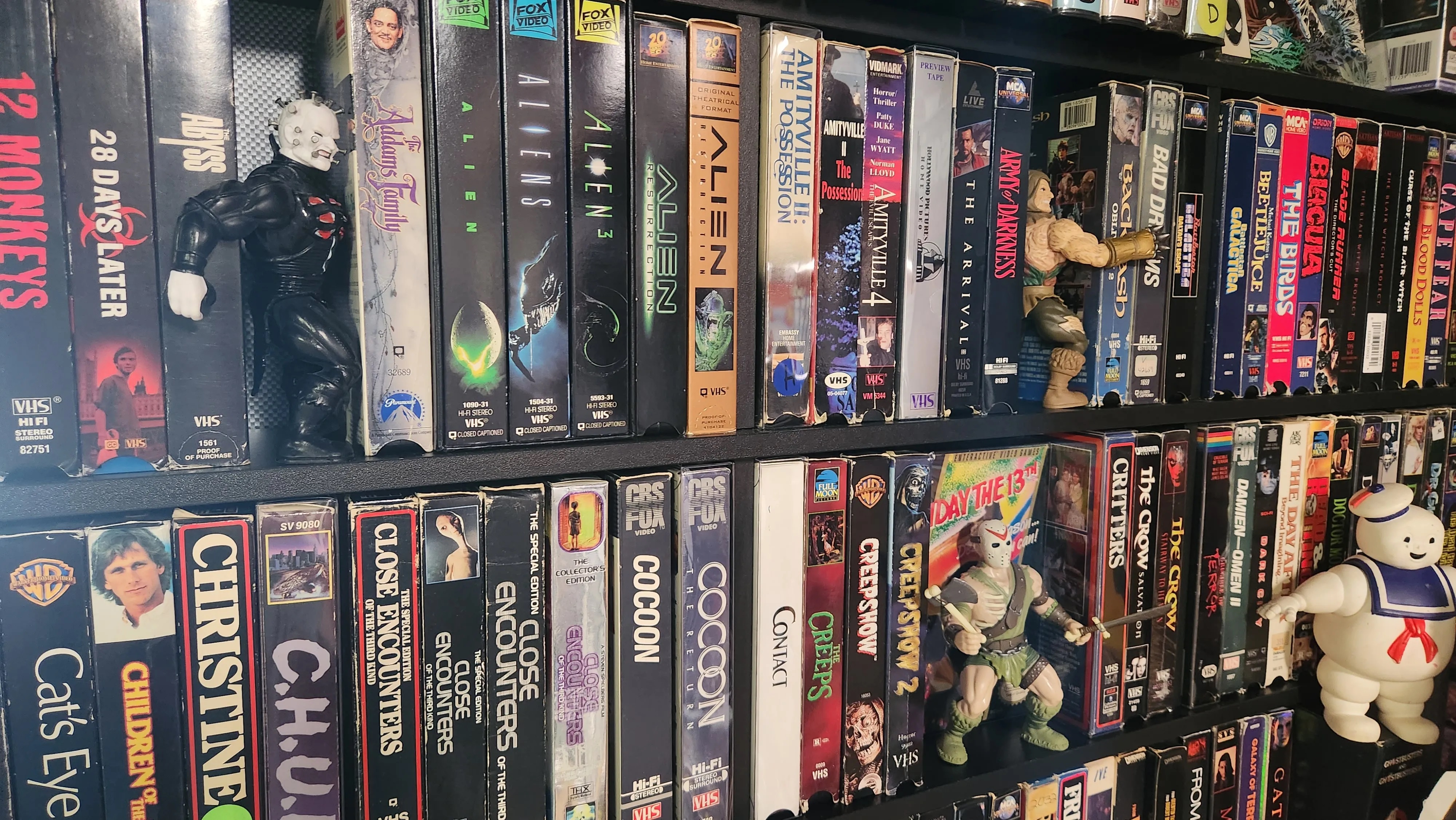
While ridiculous sales figures for original copies of Halloween and other popular titles are occasionally bandied around on blogs and social media, these exaggerated sales and stories usually fade from public consciousness by the end of the month. With newcomers and increased interest in VHS via social media platforms beginning to shine a light on the once-dark corners of the VHS collecting community, it’s simple to read the room and discover veteran VHS collectors’ utter disgust for this latest fad.
The health of any collecting community must encourage calm conversation and an open mind when it comes to the grading topic. Yes, certain companies and for-profit individuals extract more than they provide to the area, which can lead to a chain reaction of undesirable behaviors that ripple out like waves in a pond. It is also true that as a pastime grows in popularity, distinct types of VHS collectors emerge, e.g. Collectors who like sealed copies of their favorite films solely to collect and do not intend to sell. After all, there are often other ways to enjoy these popular films without turning on a CRT and watching them on tape. Furthermore, open copies of your favorite movies are far easier to find and significantly less expensive than sealed copies.
The frequently harsh attitude of the “just open it” crowd comes across as tone-deaf in the eyes of both new and long-time VHS collectors, especially when some collectors may value the exclusivity or ‘flex’ of the considerably more unusual, sealed cassette. This issue is especially obvious when considering that ancillary, yet more mature collecting fields (such as comics and trading cards) have accepted and normalized graded/sealed collecting, yet VHS and even retro-gaming collecting communities remain stuck.
Remember that viewing/consuming and collecting are two distinct areas of interest that, for many people, heavily overlap. However, if you are more of a collector than a viewer/consumer, it is simply another way to appreciate the tremendously entertaining rabbit hole that is VHS collecting.
VHS Collecting: A Visual Starter Guide for VHS Covers and Tapes
From an engineering sense, VHS cases and tapes have stayed essentially unchanged over the years. However, an untrained eye may find it impossible to determine the precise edition or even the publication date. Upon entering the space, a massive jungle of packaging/box design, factory sealing, anti-theft, watermarks, sticker seals, distributor logos, and artwork modifications emerges, which frequently changes with each new release over the years. In many cases, first-edition releases and versions from the early 1980s are the rarest and consequently most sought after by VHS collectors.

The rarity and scarcity of these early 1980s albums are sometimes attributed to their extremely high retail pricing. One might reasonably suppose that copies nearly 40-45 years old are simply lost, degraded, and eventually destroyed over time. However, in the early 1980s, shops were charging $79.95 or more for blockbuster titles like Karate Kid, Back to the Future, and The Terminator. These extreme price points rendered the barrier to purchasing these recordings high and cost-prohibited, resulting in fewer owners and circulating copies compared to the ~$10-20/tape price points and massive supplies for releases from the late 80s to the early 2000s. This section is not intended to be a comprehensive guide, but rather to provide a brief overview of some of the various packaging styles and releases popular among VHS collectors.
Video Rental Library VHS Tapes (~1980)
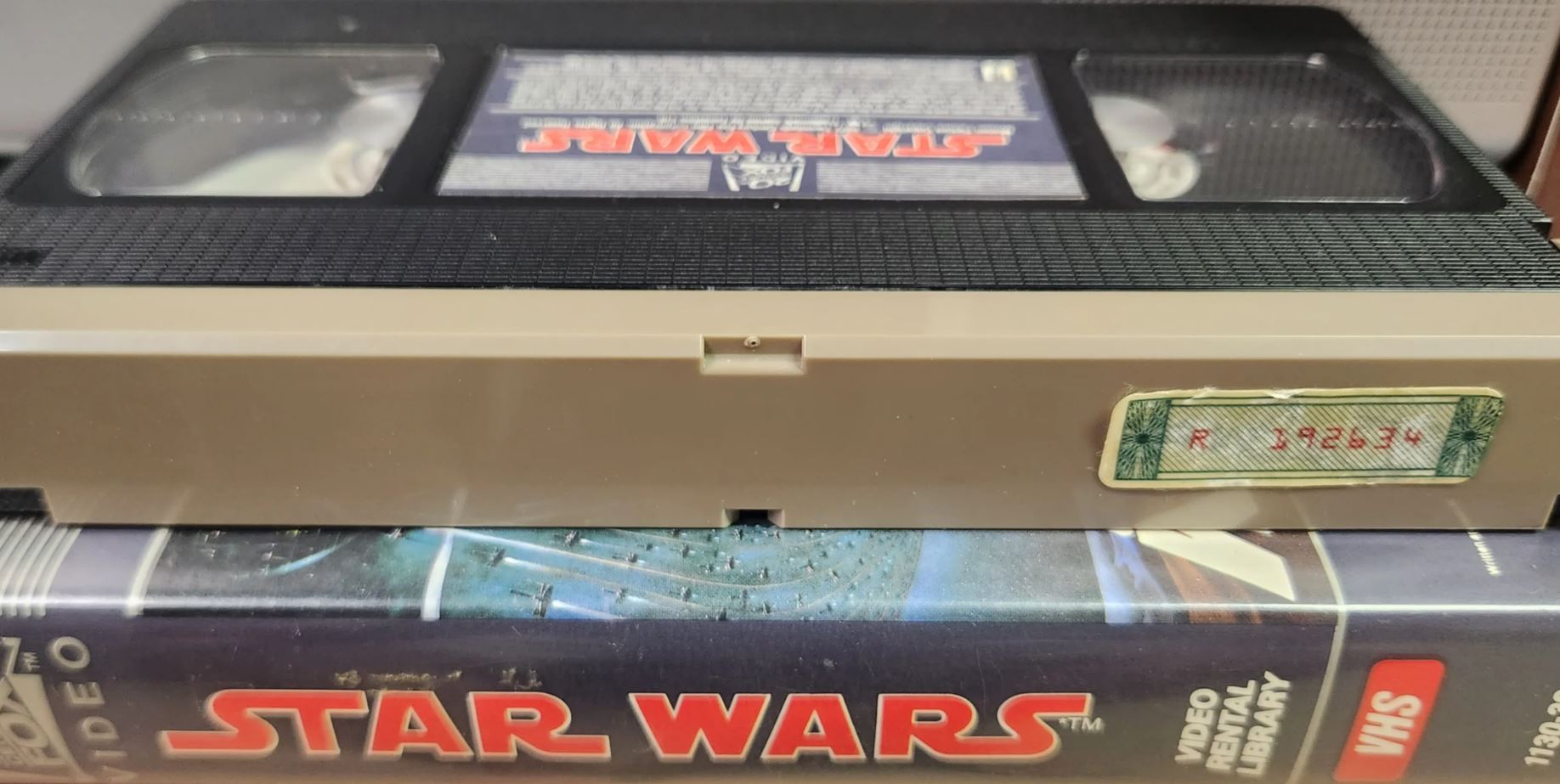
While the long-defunct Magnetic Video Corporation (1968-1982) released the first commercially available VHS films, 20th Century Fox’s Video Rental Library has some of the earliest VHS films available for rent. It’s difficult to say how many films were released under this label; however, many are extremely difficult to get, even online through eBay. What’s more, these specific series of tapes had matching serial numbers inscribed on stickers which could be located on the back, bottom right of the clamshell case, and on the cassette guard panel as shown above. These stickers were, in part, a protection/security mechanism for renters to ensure that the original copies of the film found their way back to the rental shops.
It’s generally difficult to find copies with matching serial numbers that are still intact and legible. While the Video Rental Library includes several films that released in theaters prior to 1980, Star Wars’ inaugural rental offering is possibly the most sought-after and certainly the most prevalent. Despite being reasonably easy to obtain online, with growing demand among Star Wars and VHS collectors, expect to pay more over $100 for this first edition of Star Wars.
Warner Home Video (~1980–1985) VHS Tapes

Initially released in huge cardboard boxes, Warner Home Video’s VHS film offering quickly evolved to clamshells, which were issued throughout the early to mid-1980s. The packaging for Warner Home Video clamshell releases is some of the most visually appealing tapes to collect, thanks to the consistent package design on the spine and the often stunning cover art. Many films received their first retail distribution from Warner Home Video at this time, and as a result, titles like The Exorcist and The Shining now cost a high price.
MGM/UA — “Big Box” and Clamshell VHS Tapes

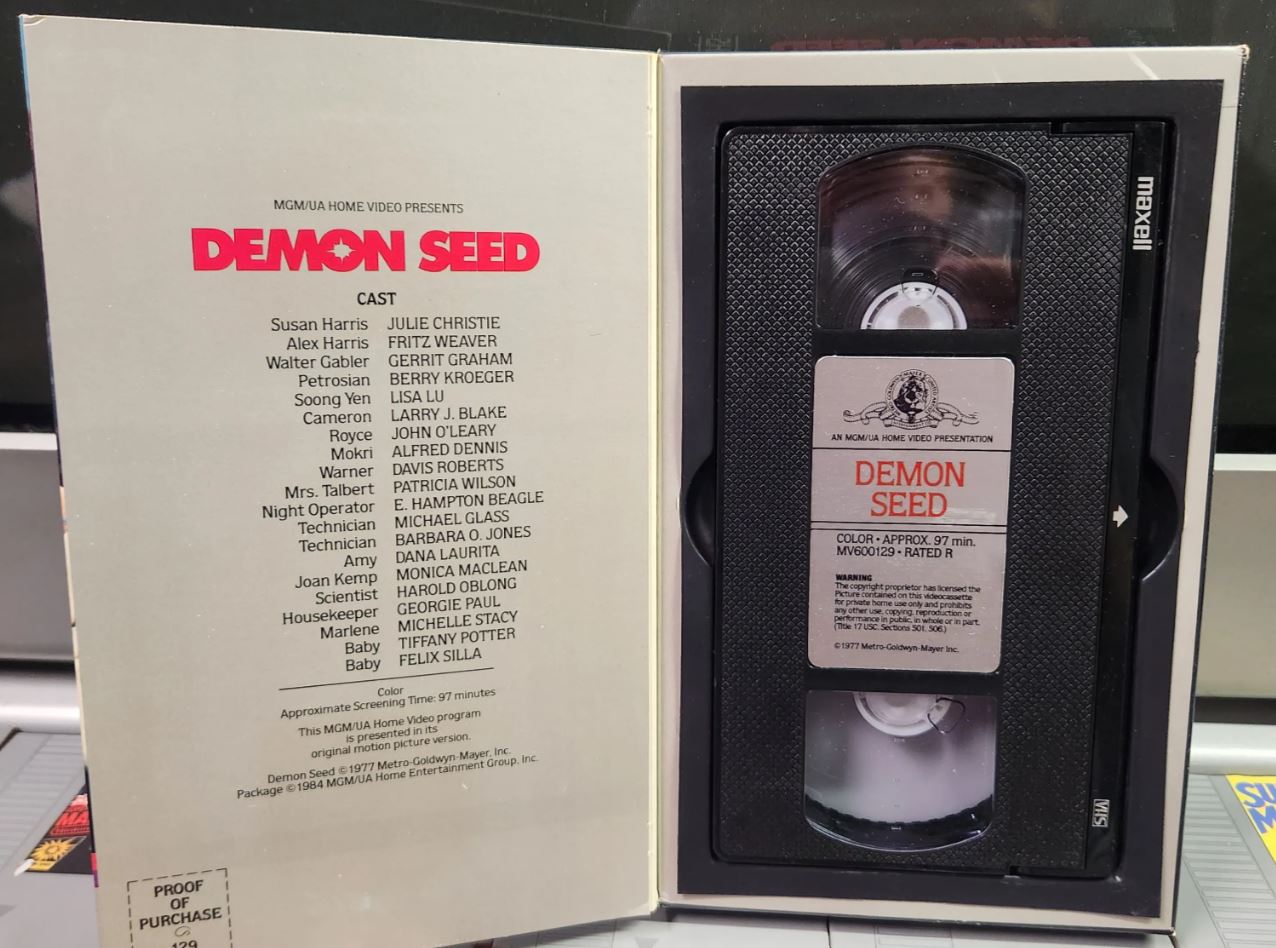
Following the merger of Metro-Goldwyn-Mayer (MGM) and United Artists (UA) in the middle of 1981-82, MGM issued VHS releases with the MGM/UA logo on the packaging. The examples shown include both the “big box” (left) and the perhaps more recognizable clamshell variation (right). Given the often exorbitant initial retail costs for these films, it is impossible to overstate how much more of a perceived premium offering the “big box” has, particularly when compared to standard black clamshells or traditional slipcases/slipcovers found on the majority of later releases in the 1990s and early 2000s.
“Capsule Case” or “Pillbox” VHS Tapes
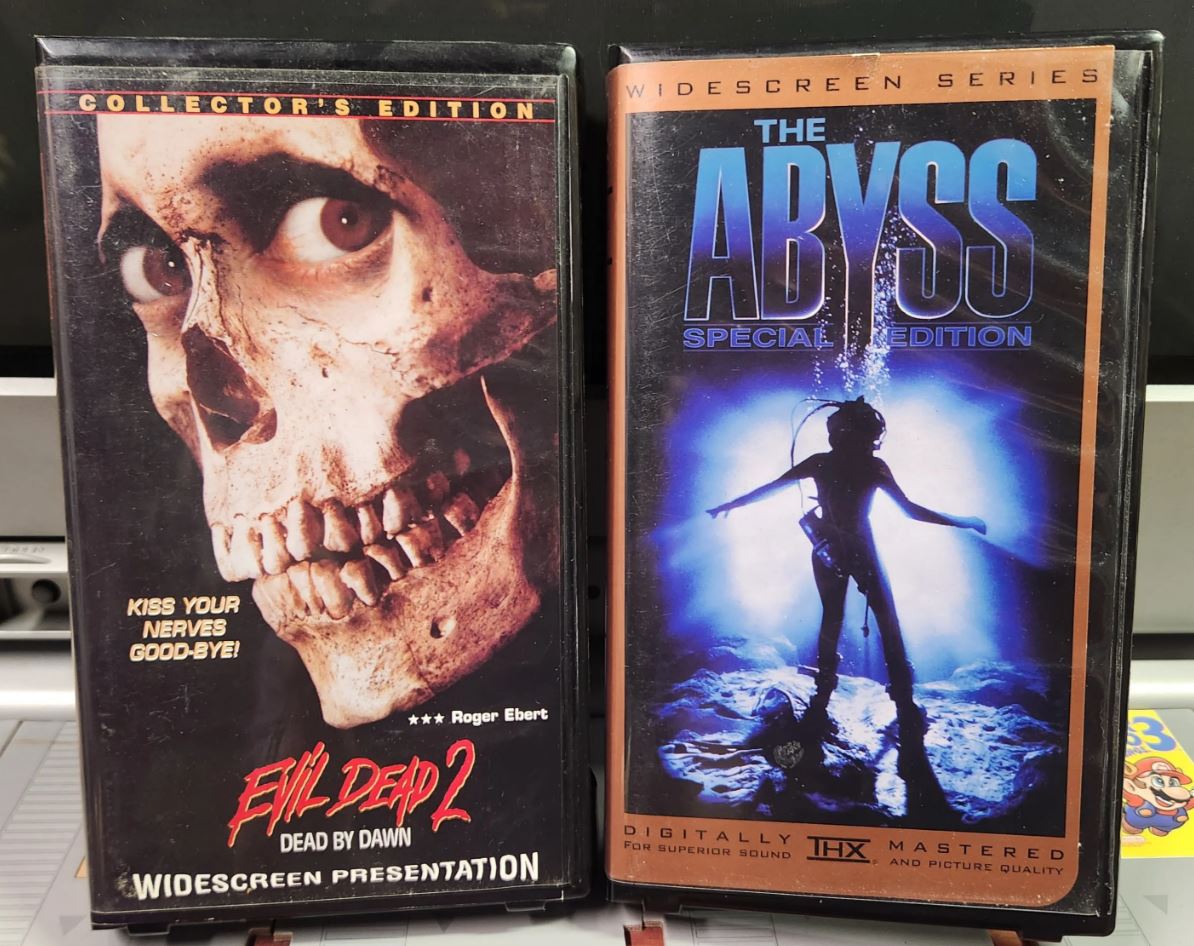
The tough plastic casings, sometimes known as “capsule cases” or “pillboxes,” are distinctive since they are scarce. These differ from the far more frequent clamshells by having a hardened plastic shell that is slightly smaller in profile than the less durable clamshell.
“Big Box” and Slipcase/Slipcover VHS Tapes
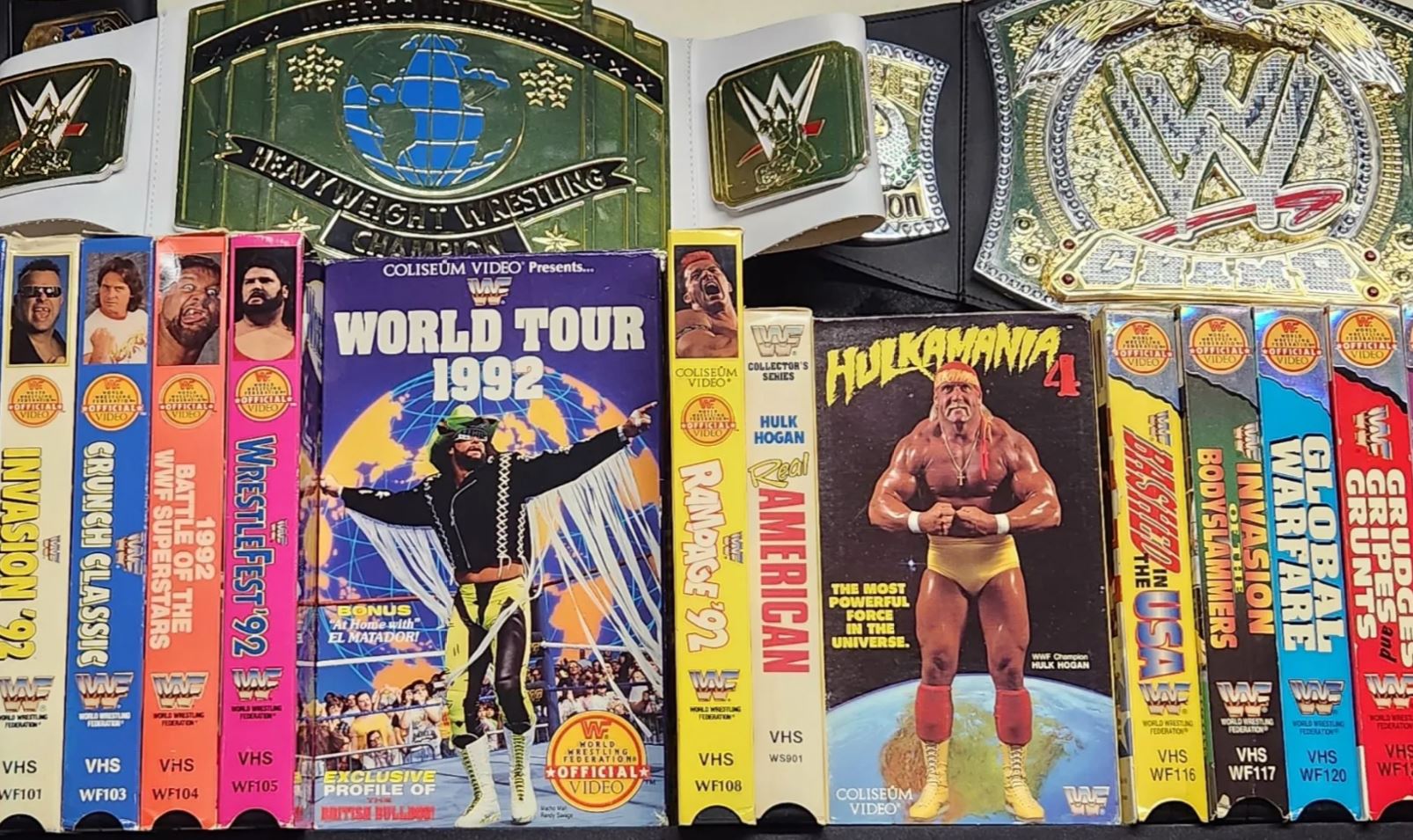
Several early films released in the early 1980s, special releases, cartoons, and even wrestling tapes were available in both “big box” and slipcase/slipcover formats. The “big box” was an eye-catching example of clever marketing on increasingly packed shelves at video rental businesses, and it is often highly sought for by VHS collectors due to its clear visual appeal and nostalgia. In terms of construction, these wrestling “big box” tapes differed from the MGM/UA example above in that they used an oversized slipcase/slipcover with a hollowed cavity on one side to provide structural stability and prevent the box from crushing while also expanding the design space for the larger artwork.
Screeners and For Your Consideration (FYC) VHS Tapes

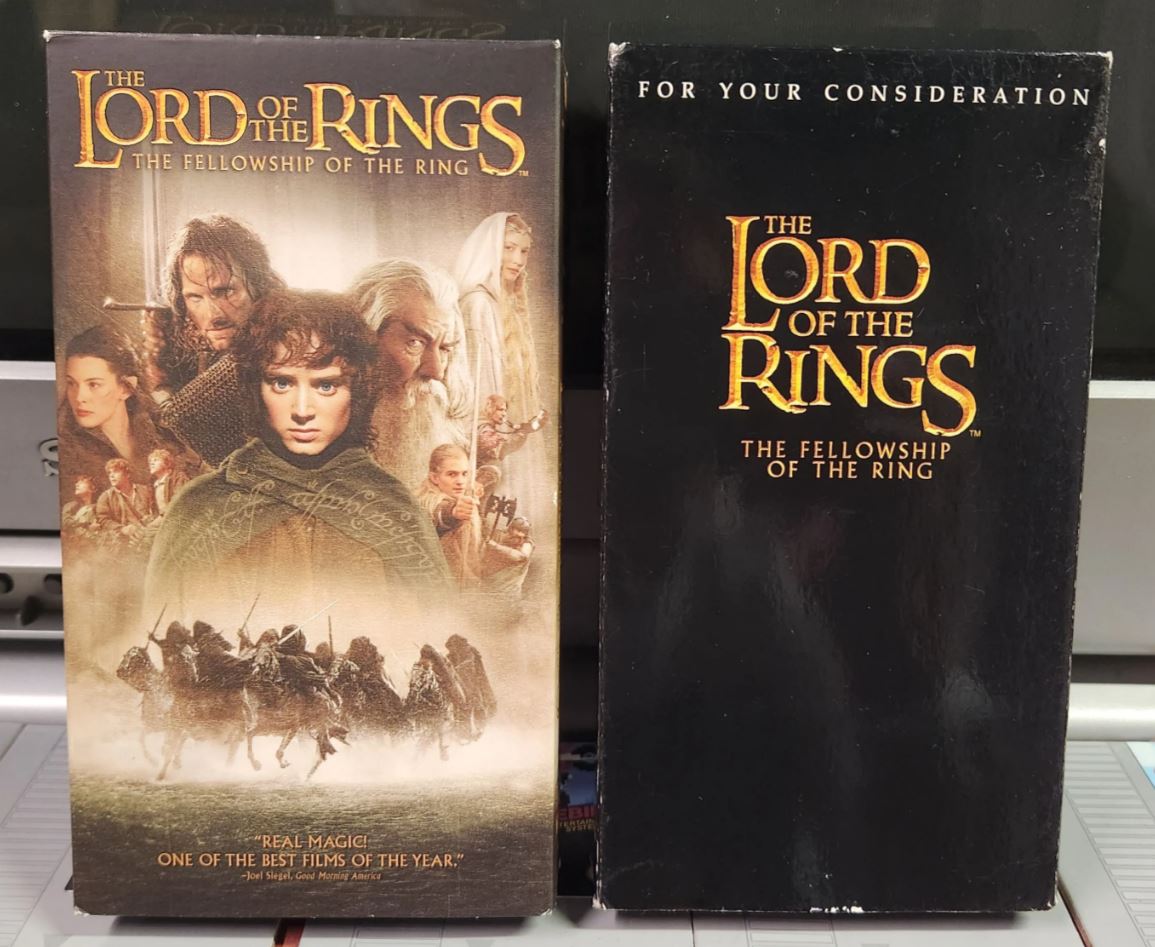
Some of the seemingly lesser-discussed editions among VHS collectors include screening cassettes, sometimes known as “screeners,” and “For Your Consideration” (FYC) variants. Screeners were frequently given to video rental companies to convince store owners to purchase copies of the film, and in many cases, they included box office financial message and unique promotional content before the film. Another distinguishing aspect of some screeners is the usage of messages that regularly appear on the bottom of the screen, emphasizing in some way that these specific copies are for promotional purposes only. While not optimal for seeing the film, the messages have a certain appeal knowing that you could be watching a tape played on loop at a small mom-and-pop video rental business or even your local Blockbuster.
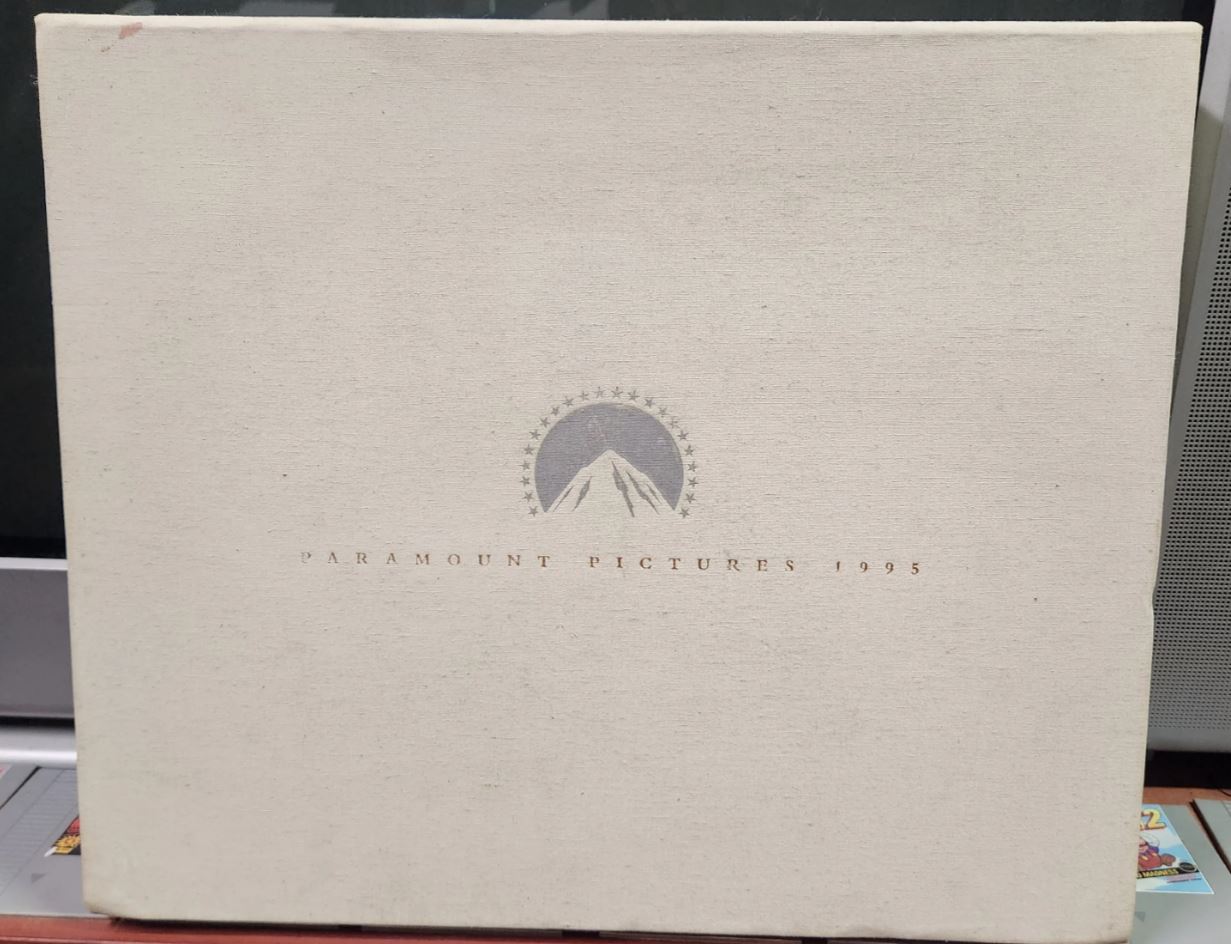
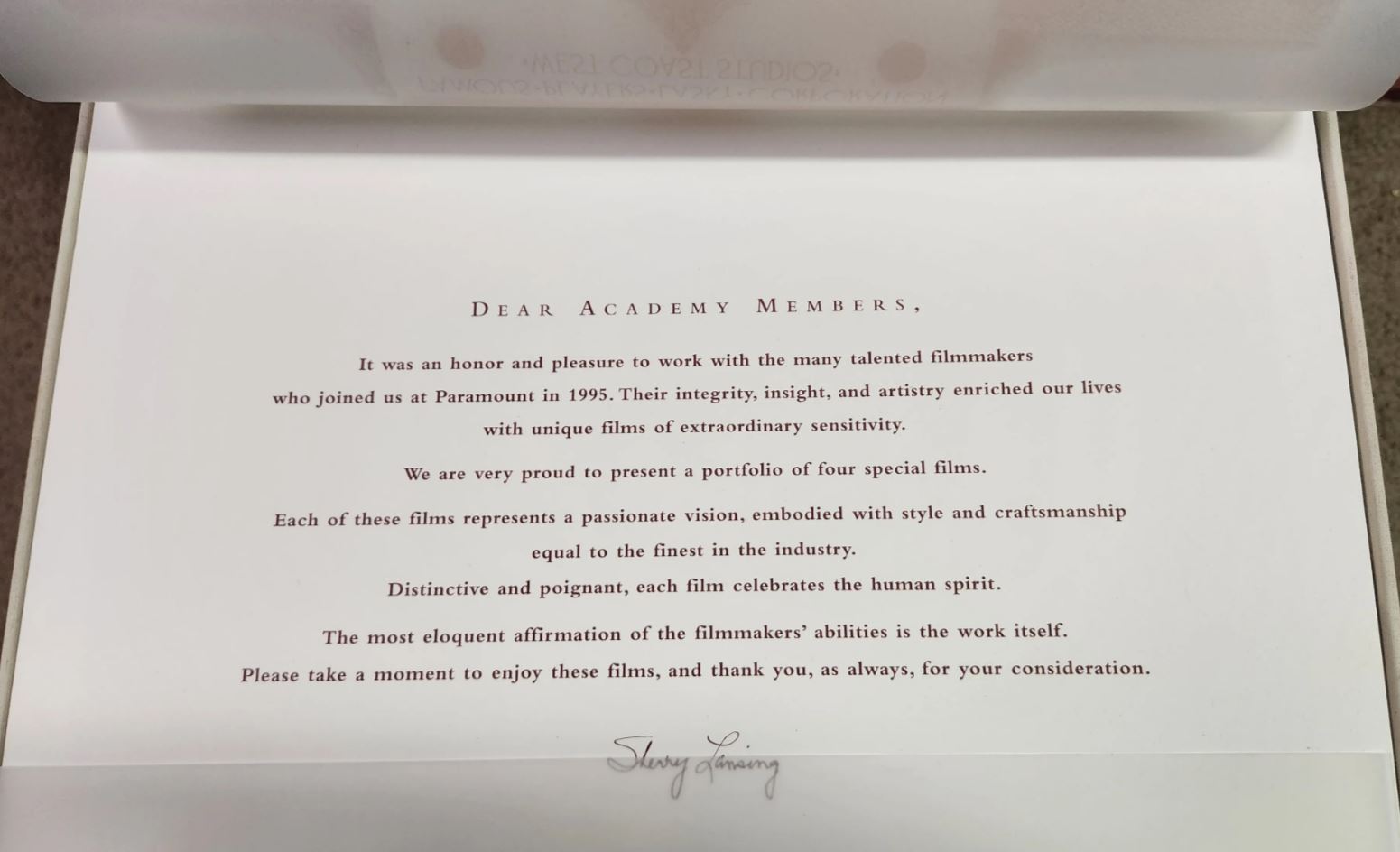
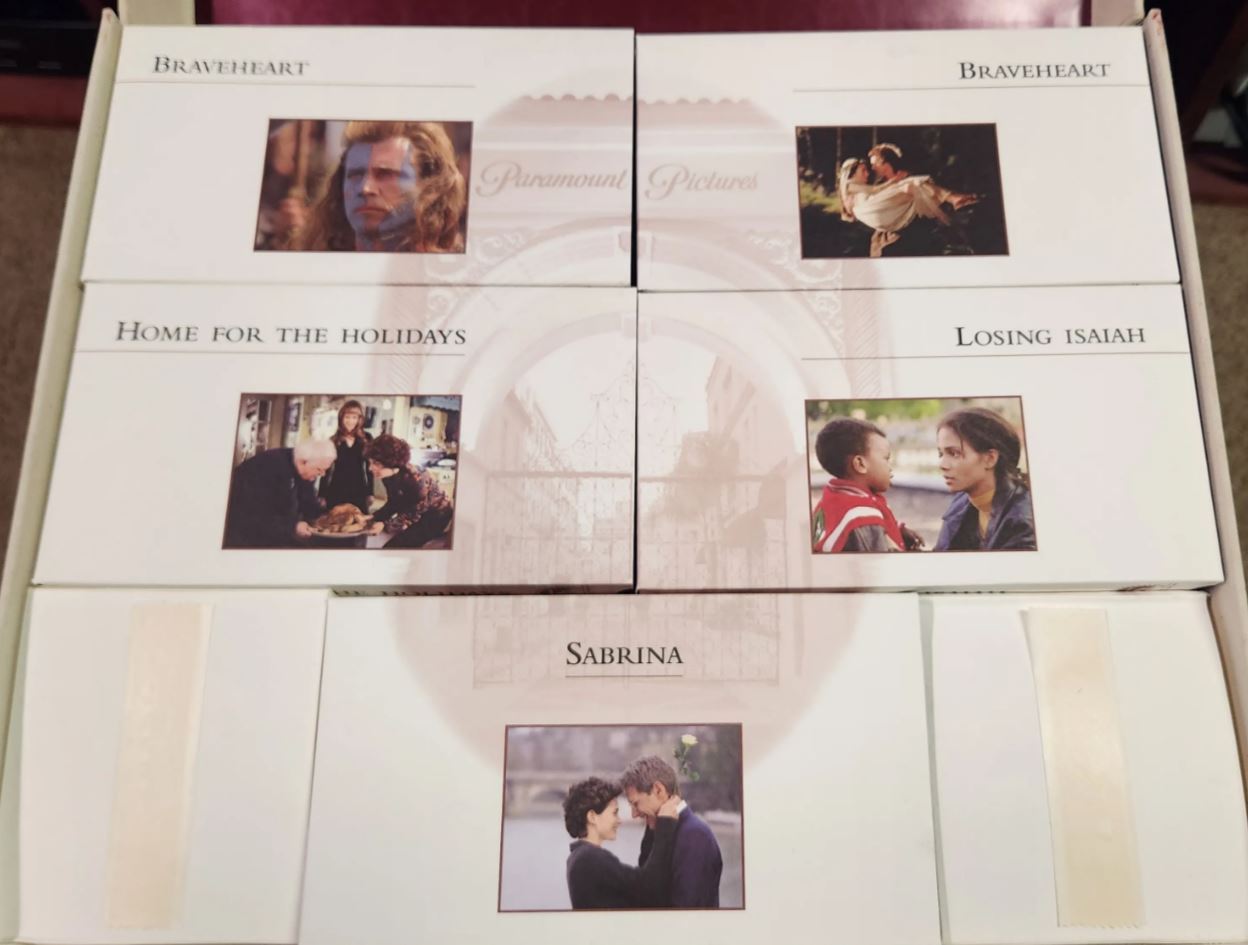
FYC copies were initially distributed to Academy Members, and the films themselves were typically packaged in very basic packaging that was occasionally unusual in comparison to the screener and official retail releases. These films occasionally came in bundled packages containing letters, promotional photos, and, on rare occasions, multiple more films, as was the case with the popular film Braveheart and others indicated above.
VHS Imports

Obvious printed language changes on the cover art clearly indicate the location in which your cassette was originally issued. While age restrictions are ubiquitous on more current media, such as DVDs-4K, age-rating systems were almost non-existent in the early days of VHS in North America. This was not always the case in other areas. For example, the red, circular British Board of Film Classification (BBFC) mark followed by the age recommendation (15 or 18) symbols is a clear clue, as demonstrated with the House films here.
Last Movies Released on VHS
The last VHS release was The History of Violence on March 14, 2006. However, much to the astonishment of both non-collectors and collectors, several films were released on VHS around this time, signaling the end of this era in home video entertainment history. The following is a list of major motion pictures that received VHS distribution in 2006.
- History of Violence (New Line) — March 14th, 2006
- Jarhead (Universal) — March 7th, 2006
- Just Friends (New Line) — March 6th, 2006
- Lady and the Tramp: 50th Anniversary Edition (Disney) — February 28th, 2006
- The Ice Harvest (Universal) — February 28th, 2006
- Stuart Little 3: Call of the Wild (Sony) — February 21st, 2006
- Domino (New Line) — February 21st, 2006
- Zathura: A Space Adventure (Sony) — February 14th, 2006
- Saw II (Lionsgate) — February 14th, 2006
- Waiting… (Lionsgate) — February 7th, 2006
- My Little Pony: The Princess Promenade (Paramount) — February 7th, 2006
- Just Like Heaven (Dreamworks) — February 7th, 2006
- Elizabethtown (Paramount) — February 7th, 2006
- Doom (Universal) — February 7th, 2006
- Tom and Jerry: 50th Birthday Classics (Warner) — February 7th, 2006
- Bambi II (Disney) — (Disney) — February 7th, 2006
- Pride & Prejudice (Universal) — February 2006
- The Legend of Zorro (Sony) — January 31st, 2006
- The River King (First Look) — January 24th, 2006
- The Fog (Sony) — January 24th, 2006
- Lord of War (Lionsgate) — January 18th, 2006
- Two for the Money (Universal) — January 17th, 2006
- The Man (New Line) — January 17th, 2006
- The Constant Gardener (Universal) — January 10th, 2006
- Holly Hobbie and Friends: Surprise Party (Paramount) — January 10th, 2006
- Wedding Crashers (New Line) — January 3rd, 2006
- My Date with Drew (First Look) — January 3rd, 2006
- The Gospel (Sony) — January 3rd, 2006
- The Cave (Sony) — January 3rd, 2006
- Broken Flowers (Universal) — January 3rd, 2006
- The Aristocrats (ThinkFilm) — January 2006
Source: https://medium.com/@david.roeseler/vhs-collectors-a-guide-for-vhs-tape-collecting-e72f17b24b86#c5ce
